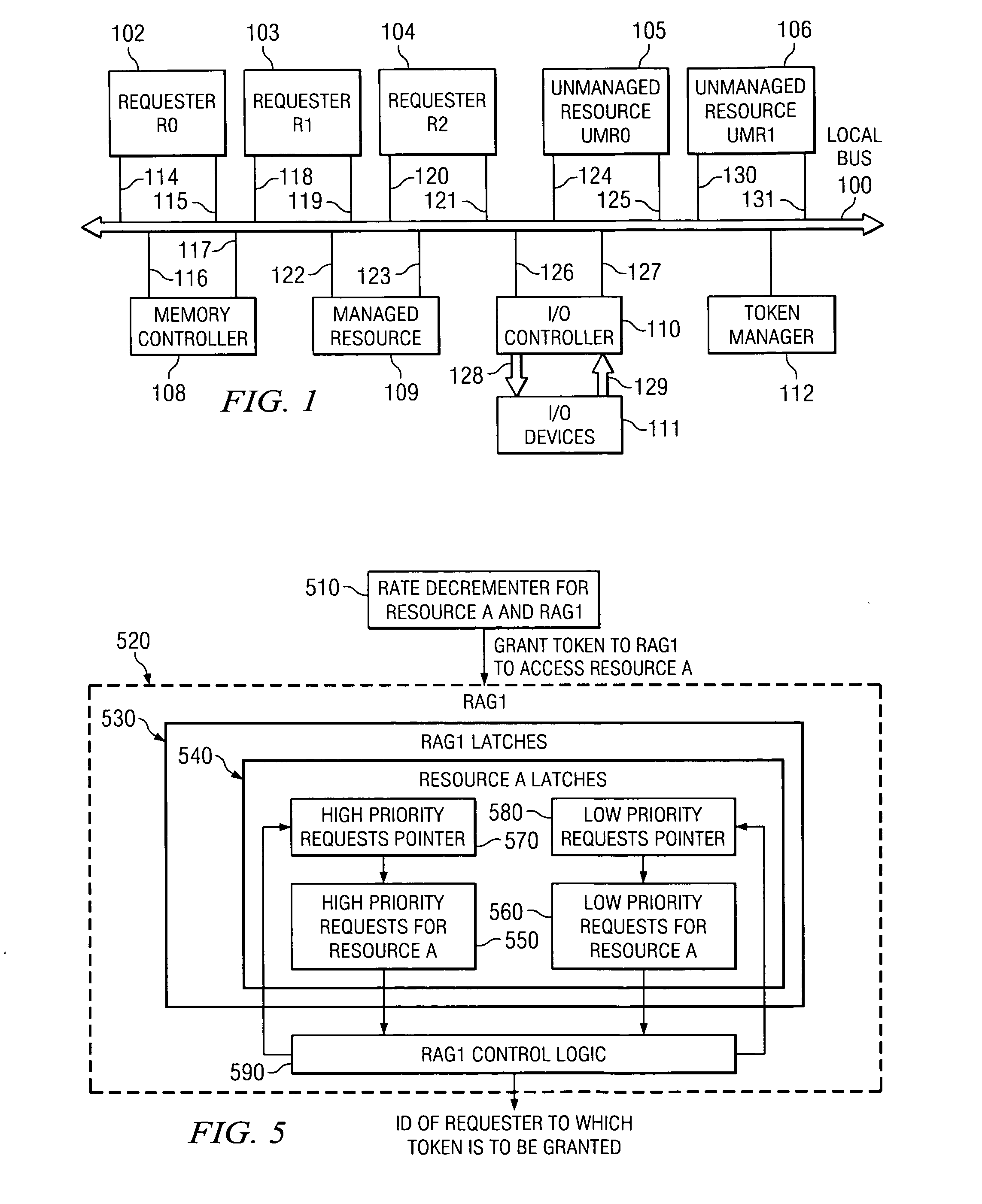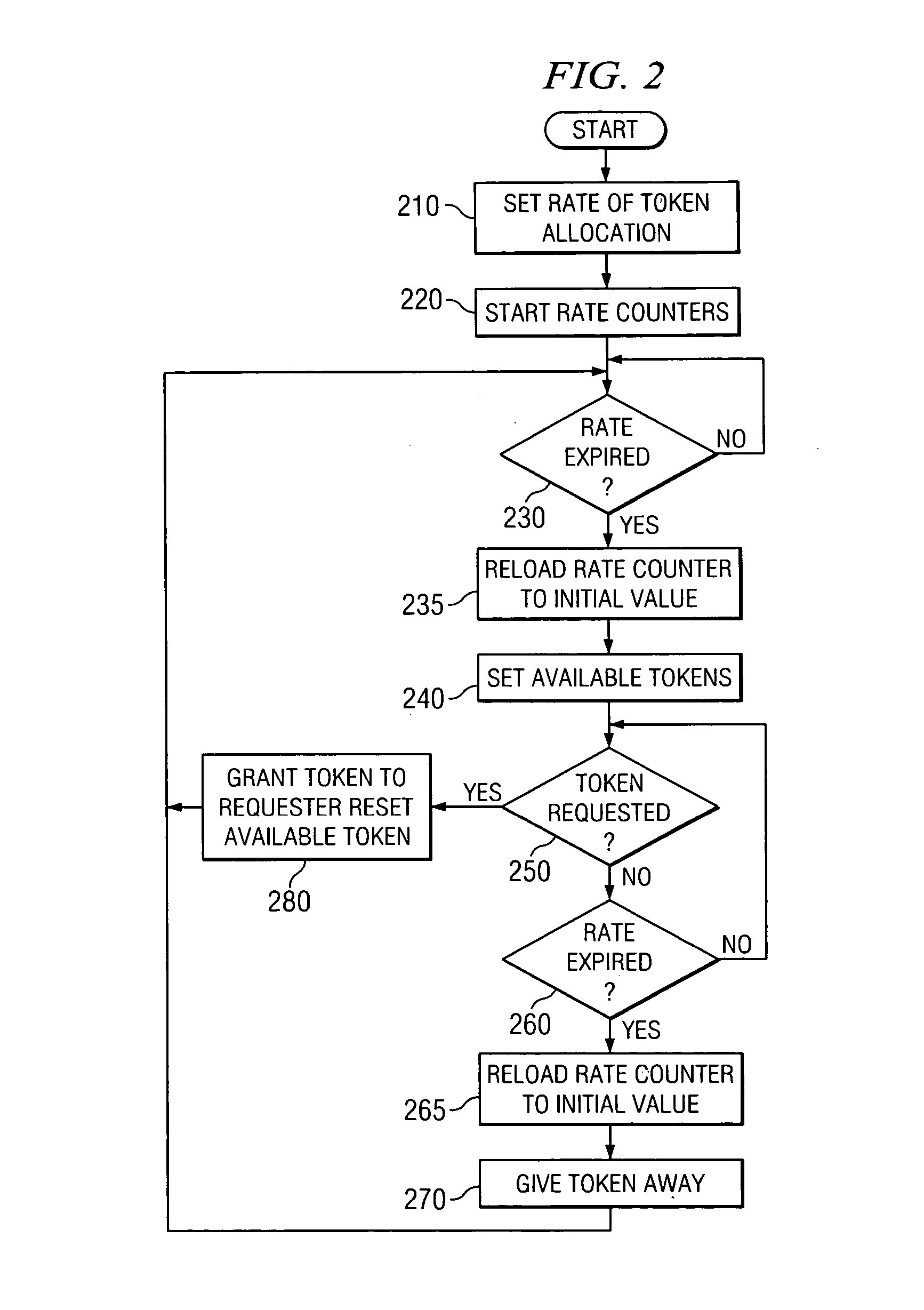Priority control in resource allocation for low request rate, latency-sensitive units
a technology of priority control and resource allocation, applied in the field of data processing apparatus and method, can solve the problems of low latency, inability to utilize the techniques used for network bandwidth management for bandwidth management within the computer system, and almost an order of magnitude more difficult to manage bandwidth inside the computer system than network bandwidth management, so as to reduce the amount of time that a critical lock is held
- Summary
- Abstract
- Description
- Claims
- Application Information
AI Technical Summary
Benefits of technology
Problems solved by technology
Method used
Image
Examples
Embodiment Construction
[0036] The present invention provides an apparatus, system, computer program product, and method for providing priority control in association with resource allocation. In an exemplary embodiment of the present invention, the mechanisms of the present invention make use of the architecture described in co-pending and commonly assigned U.S. Patent Publication No. 2005 / 0138621 A1, entitled “Method of Resource Allocation Using an Access Control Mechanism,” filed on Dec. 17, 2003, which is hereby incorporated by reference. The architecture described in this co-pending application is summarized with reference to FIGS. 1-3 below. It should be noted however, that the architecture described hereafter is only one example of the data processing system and environment in which the present invention may be implemented. Other data processing systems and environments may be used with the present invention without departing from the spirit and scope of the present invention, as will become readily...
PUM
 Login to View More
Login to View More Abstract
Description
Claims
Application Information
 Login to View More
Login to View More - R&D
- Intellectual Property
- Life Sciences
- Materials
- Tech Scout
- Unparalleled Data Quality
- Higher Quality Content
- 60% Fewer Hallucinations
Browse by: Latest US Patents, China's latest patents, Technical Efficacy Thesaurus, Application Domain, Technology Topic, Popular Technical Reports.
© 2025 PatSnap. All rights reserved.Legal|Privacy policy|Modern Slavery Act Transparency Statement|Sitemap|About US| Contact US: help@patsnap.com



